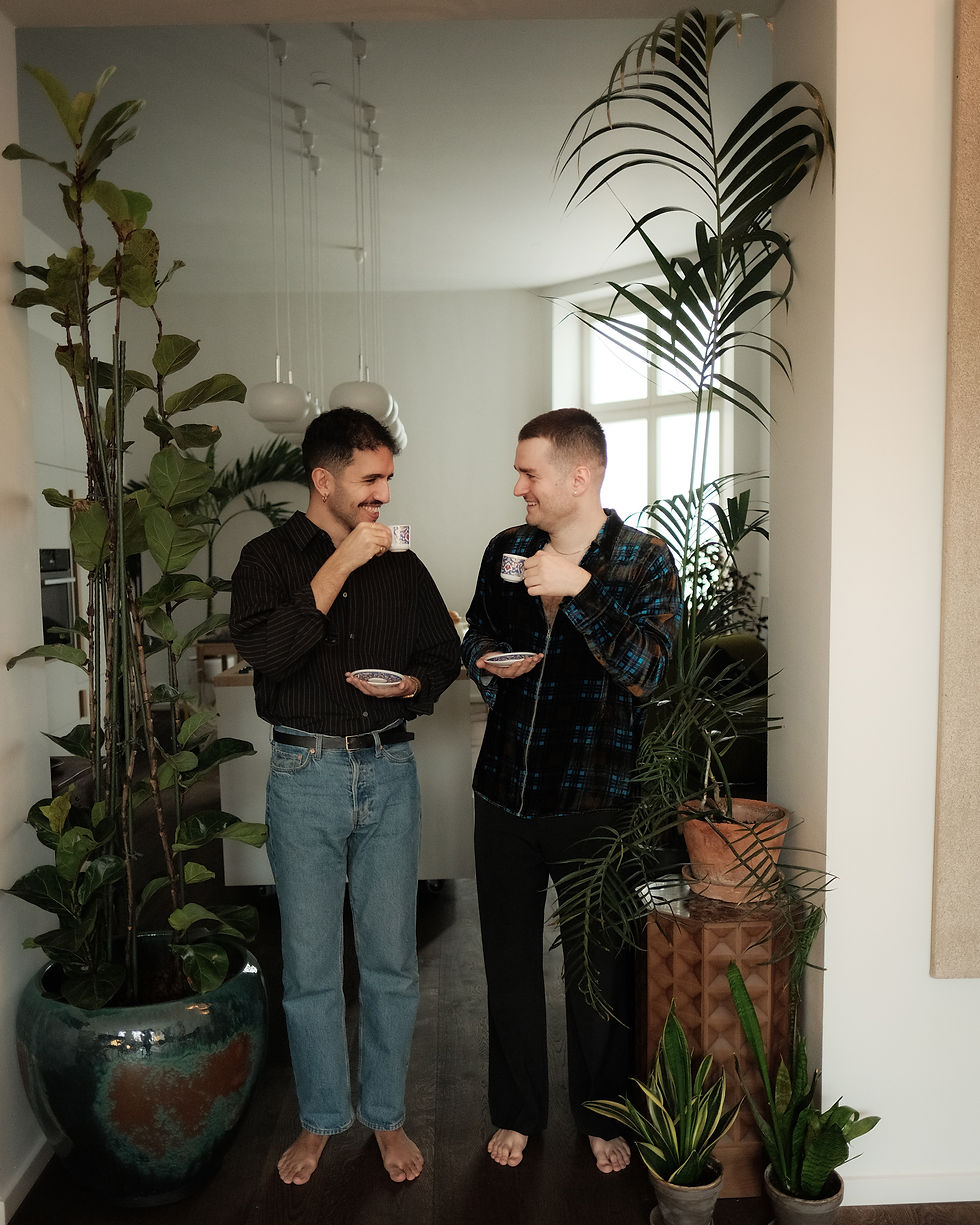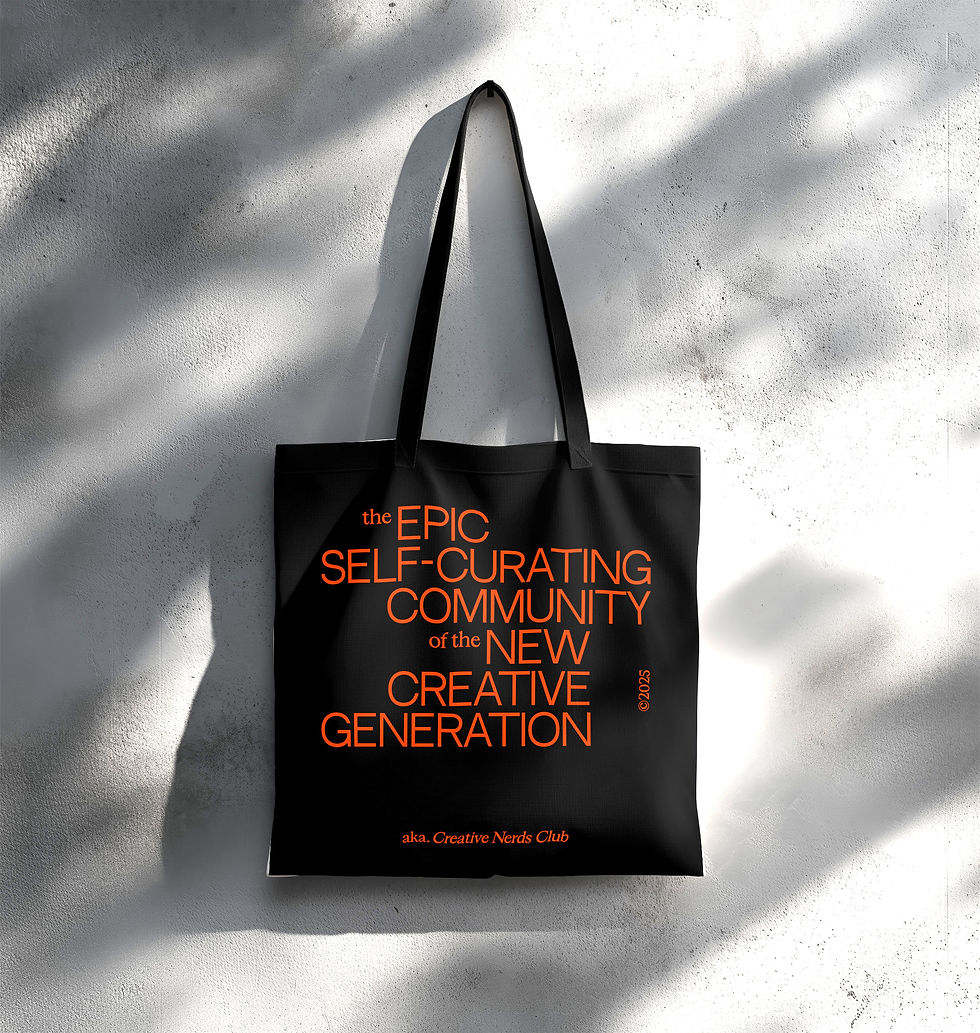Yont Studio | Creative Studio
- Onur Çoban

- Jul 10
- 6 min read

Brutalist Pink, Yont Studio
Serdar and Cosan are a design duo who freely navigate between digital and physical realms through their architecture-based practice. Their Berlin-based studio focuses on spaces intertwined with club culture, intuitive material explorations, and emotionally charged objects. Their work oscillates between clarity and ambiguity, evoking both the everyday and the imaginary.
We talked about their design practice, production processes, and how they turn the feeling of in-betweenness into an advantage.
Interview: Onur Çoban
Who are Serdar + Cosan? Could you briefly introduce yourselves?
We’re both architects and became friends while studying our master’s degrees at TU Berlin in 2018. In the winter of 2023, we started dreaming about founding our own studio, as we felt our future goals and design perspectives aligned really well.
Serdar: After finishing my studies, I worked in architecture offices for around two years. Around the time of Covid, I realized that full-time office life didn’t make me happy, so I decided to make a change. I then began learning Cinema4D and quickly found my creative passion in it, since I had always been drawn to visual storytelling and the endless freedom digital tools offered. That led me into freelance projects with artists and continuous exploration with the program, and eventually, to creating imaginary spatial environments as personal projects.
Cosan: During my studies in Ankara, I practiced oil painting and sculpture, and worked in an art gallery where I became closely connected to the Turkish contemporary art scene. After completing my studies in Berlin, I shifted toward interior architecture where I felt like I had finally found the right scale. Interiors felt more human, more connected to daily life and rhythm. While working in the office, I had the chance to dive deeply into the world of materials, colors, patterns, and details, which shaped how I approach design today.

Coşan & Serdar, Yont Studio
How would you describe your design practice?
Our design practice is rooted in architecture but expands across furniture, spatial design, and digital experimentation. It stretches from concept development to physical execution; always in a back-and-forth dialogue between digital tools and hands-on building. For us, design is not just about objects, it’s about crafting an entire atmosphere. We think on a detailed, almost cinematic level: which magazine will sit on the table, what kind of music will be playing in the background, which lights will evoke the mood.
The core of our practice is a material-led poetics. We often begin with a material intuition and build the atmosphere and composition around it. For us, materials carry emotion, tension, and memory just as much as function.
"Our work so far has focused on blending club culture with design, using industrial materials and raw aesthetics, but by avoiding cold minimalism. We’re more interested in how something can feel both stripped-back and warm; lived-in, yet sculptural."
Torstraße 220, Yont Studio
When working on a project, how do you reflect the character and personality of the design? What are the most important criteria for you in this context?
We both come from Turkey and now live in Berlin as immigrants, so we naturally carry a sense of in-betweenness; between cultures and traditions, between the familiar and the unknown, between clarity and imperfection. This duality feeds into our work. We often build around open-ended scenarios: is it a soundscape or an exhibition set-up? A domestic scene or something more abstract? Does that material feel soft or rough? We’re drawn to this sense of the undefined, it mirrors how contemporary life feels.
At the same time, there’s something in us both that wants to create universes with a strong sense of relatability; making someone feel part of our work as they interact with it. It often sits in a sweet spot between the banality of daily life and something surreal or unexpected. This tension excites us.
Could you tell us a little about your production process? How does the creative process work for Serdar and Cosan?
Our creative process is quite intuitive and collaborative. We have a home studio setup, often working in a shared rhythm, with sketches, render tests, and material samples scattered across the table. Always with good music playing in the background.
Torstraße 220, Yont Studio
Material research is a big driver in the process. We’re very tactile, always collecting references, testing textures, comparing subtle differences. Some of our best ideas come from simply observing potential of a material or noticing how light hits a surface. There’s also a sense of play and euphoria when things start to click, we try to reflect this joy in the outcome.
The production process usually starts in 3D. We sketch in Cinema4D or Rhino, build concepts, and test ideas. Once we’re confident in the direction, we move into the final product and finding the right fabricators, artisans, or manufacturers. For our interior project Torstraße 220, that meant working with a wide range of creatives, from metal workshops and carpenters to lighting specialists and textile designers.
Which of your works has excited you the most so far in terms of the design process and the resulting product?
The Brutalist Pink collection, especially because of its boldness and emotional impact. It allows us to explore audio object design in a more sculptural, unconventional way blending raw forms with unexpected softness. It feels like a fresh take on how these objects can move beyond traditional furniture typologies and introduce a new aesthetic. Very soon, we’ll be producing the Brutalist Pink collection in physical form.
Brutalist Pink, Yont Studio
At the same time, our Torstraße 220 project , set to be completed in September, has been a major turning point. We developed a vision that rethinks what a record store, music-label studio, and pop-up event space could look and feel like when merged into one fluid, evolving environment. It brought together a wide range of established and emerging creatives and together enabled us to design a dynamic space that reflects Berlin’s design and club scene.
Both projects reflect the direction we want to keep moving in; creating spaces and objects that are emotionally charged, collaborative in nature, and open to multiple forms of use and meaning.

Torstraße 220, Yont Studio
Can you tell us a bit about the sources of inspiration behind your work? Who are the names you follow with interest in this field or in different disciplines?
Since we approach our work not just as a physical entity but as an emotional and experiential one, our inspirations come from many disciplines including classical art, design, cinema, and contemporary fashion. Of course, social media and Instagram are constant sources, besides we also have a large collection of vintage and current design magazines - like World of Interiors, Domus, and AD - that we turn to for inspiration.
From our architectural background, we’re inspired by Mediterranean vernacular architecture and Japanese wabi-sabi philosophy, as well as architects like Louis Kahn, Pierre Chareau, Isern Serra, and Peter Zumthor; all of whom share a deep sensitivity to space and material. We’re also fascinated by classical references: ancient sculptures, temples, and archaic art forms. They carry a timeless beauty and influence how we think about proportion, symmetry, and spatial rhythm.
Margiela Inspired Imagery, Yont Studio
In cinema and fashion, we look to directors like Kubrick, Xavier Dolan, Nuri Bilge Ceylan, and Luca Guadagnino. Fashion houses that inspire us massively - especially in terms of creative direction - include Acne Studios, Loewe, Margiela, and Jacquemus. GmbH also holds a special place in our hearts for the way it weaves Middle Eastern heritage and queer identity into a powerful brand narrative.
Our life in Berlin also plays a big role in shaping our aesthetic. The city’s rawness, club culture, brutalist structures, and chaotic energy constantly feed into our visual and emotional world. There’s something powerful in the tension between the city’s built history and its freedom here.
Are you excited about the future? What are your plans?
We’re very excited to see where this journey takes us. What drives us is the idea of building a collaborative and cross-disciplinary practice; not just a studio, but a creative circle of designers, artists, and friends we can grow with.
We want to keep developing work that moves between the digital and the physical. There are other exciting projects already taking shape, and we’re looking forward to continuing this path through a mix of experimentation and exploration. While our focus so far has been club culture and music spaces, we’re also interested in diving deeper into domestic environments and exploring new material palettes along the way.



































































